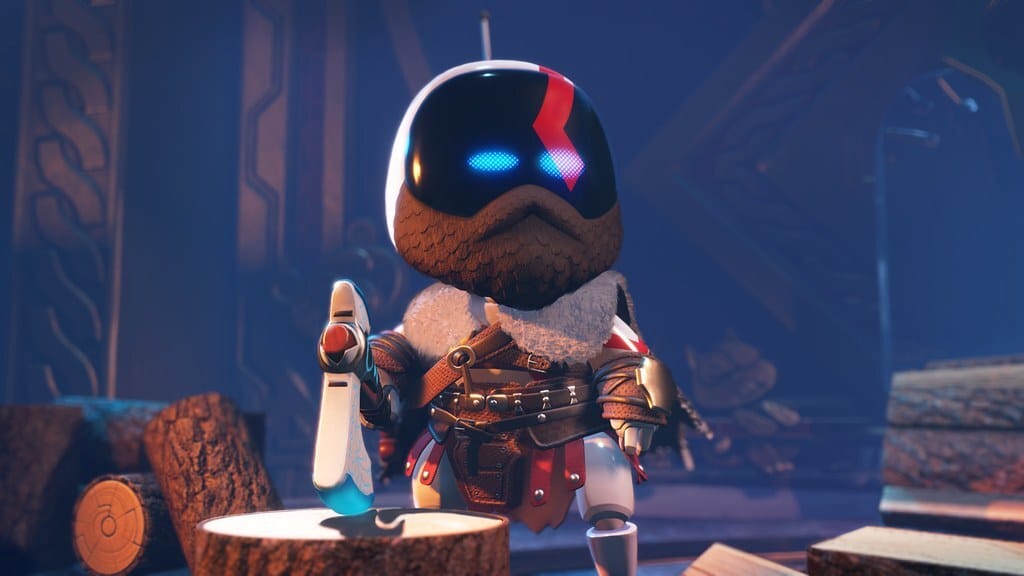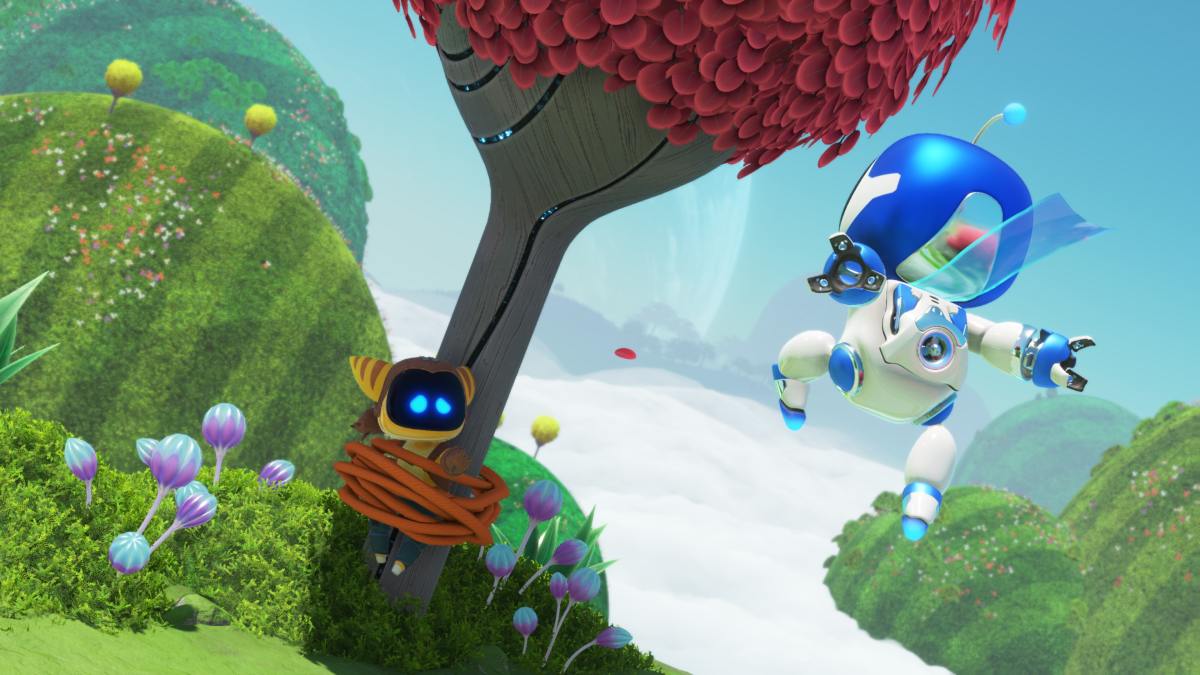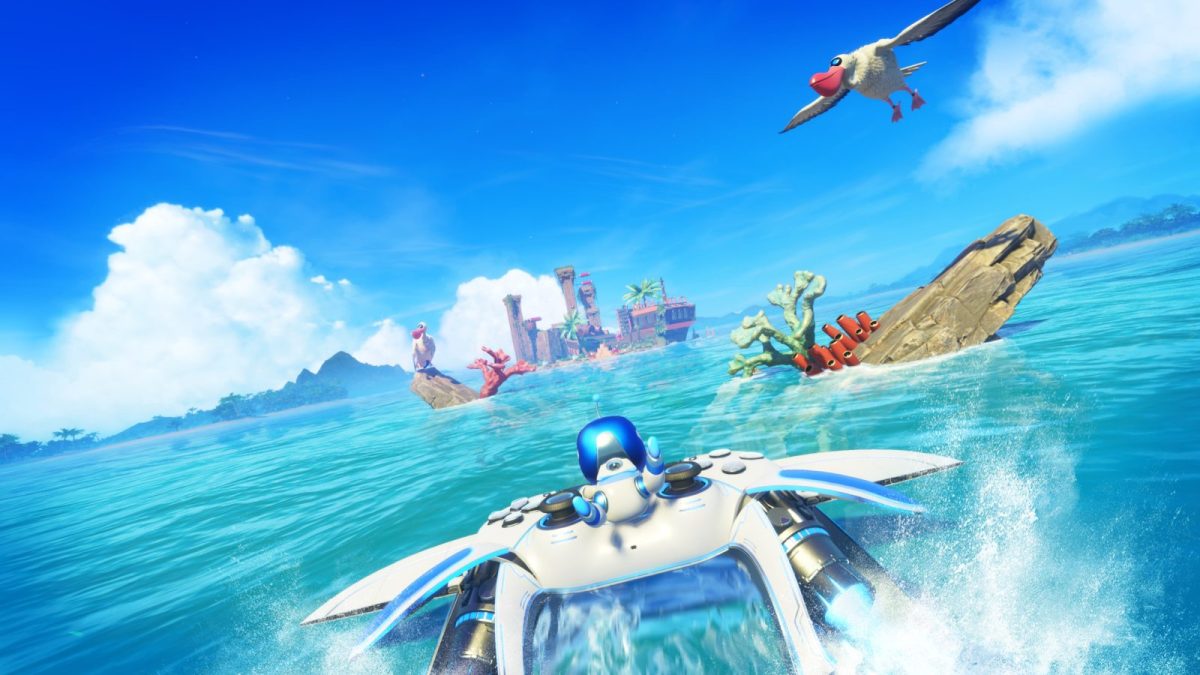Of all the showcases, of all the games, of all the characters that we saw revealed over the past couple of weeks, there was only one that made me literally shriek. From the first glimpse at his gleaming white helmet, I have been obsessed with Astro Bot – and now he’s coming to us with a feature length game.
The immediacy of my recognition comes down to two things. One, I’m a really, really devoted fan. Two, Astro Bot has such a specific aesthetic style that you can place it immediately, from the very first frame. Recently, GamesHub was invited to a group interview with Team ASOBI director Nicolas Doucet, who touched on how that style helped maintain consistency across a host of VIP bot guests.
With a blend of cartoon characters and live-action translations, it’s a question of striking a balance between the familiar and unfamiliar.
“Some characters that are more humanoid, like, maybe that are kind of less colourful characters, you know, more realistic,” said Doucet. “These ones, we have to start kind of drawing on the accessories they have, maybe the props they have – it’s not just a character, but also the things they carry that makes them more recognisable.”
In my earlier Astro Bot playthrough, I had encountered both PaRappa the Rapper and God of War‘s Kratos – which is not a sentence I anticipated saying. But the noticeable effects for them – Kratos’ beard, PaRappa’s hat – helped translate them seamlessly into the Astro style.
“There are some stylistic choices we have to make,” he continued. ” A lot of toy ranges are good examples, because they have similar kinds of things.” Funko Pop Vinyls, for example, have the trademark black eyes and big heads, but they’re still distinguishable characters. The same principles apply here.

Which characters get the Astro Bot treatment?
That doesn’t necessarily mean that the character selection process hinged on these sorts of aesthetic decisions – though it’s certainly easier to translate when there are standout features or accessories. In reality, the selection process separated potential characters into three distinct groups.
“Selecting which characters we do and which we don’t is a really interesting kind of process,” said Doucet. “You have your kind of classic blockbuster characters you’re definitely gonna have in … Then there is a category of characters that are famous, but actually are famous for the people who’ve known them – you know, like Jak and Daxter, PaRappa.”
“And then you have the third category, and that’s the most interesting. It’s the deep cuts, you know. The ones that only are known in Japan, [or] in North America, in Europe,” he said. “It’s interesting, because when we do these things we have to be fair, but at the same time, it’s an opportunity to educate a little bit about some obscure characters. Where to cut, to draw the light, sometimes has been a little bit of a difficult call.”
There are some characters that definitely didn’t make the translation easy, with the team having to develop creative solutions to ensure they could still be represented authentically in the game. The chimps in Ape Escape, for instance, presented an unexpected dilemma.
“There are some characters that didn’t translate well because the eyes were such an important part of the character – if you make them another pair of eyes, like LED eyes, suddenly you don’t recognise them anymore,” said Doucet.
“That’s why, in the case of the Ape Escape, we’ve put a mask,” he said. “The bots are actually wearing a costume, and when you punch them, the costume comes up [to show] a bot underneath … The Ape Escape characters have these big, simple, white eyes with black pupils. If you make them blue, he’s just not the same character.”

Getting hands-on with Astro Bot
A few days before the interview, I had the privilege of getting a hands-on preview of Astro Bot, where I played a couple of regular levels, a boss level and a challenge level, over the course of an hour. The best description I can use for my experience? Responsive.
The best part of Astro’s previous games – including Astro Bot Rescue Mission and Astro’s Playroom – is how incredibly reactive they are to player input. From the haptic feedback, to the way that globs of paint swirl around organically as Astro barrels through – even blades of grass feel like their own entity.
An easy highlight of the playthrough was two new mechanics: the froggy fists, and the bulldog rocket pack. The fists enable Astro Bot to swing, much like a grapple hook, but also enables longer range punches – very useful in boss fights where you want to maintain a bit of space.
The bulldog rocket pack functions exactly like it says on the tin. This is a little backpack that propels Astro forward at serious pace – and allows him to come crashing through glass walls and obstacles, a la The Juggernaut. This also speaks to the responsiveness of the game – while you can smash into one corner of a glass wall, it won’t fully shatter. You’ve got to meaningfully smash every part of the glass to get those full, glorious smithereens, and while that doesn’t do anything narratively, it’s very satisfying.
Read: Astro Bot is getting his very own non-VR 3D platformer
In my hour of play, I was impressed at how much ground I was able to cover – and not to sound like too much of a Scooby Doo villain, but I would’ve gotten away with much more had I not tried out the challenge level early. I went in with all the bravado and swagger of a pro, and became humbled extremely quickly. They’re challenges for a reason, and I can’t stress how much fun it was trying to manoeuvre myself through.
And of course, there’s the crew you pick up on the way. Those aforementioned VIP bots truly are a sight for sore eyes – and I do enjoy that to rescue them, you have to give them a very loving kick to their wiggling butts.
With innovative platforms, genuinely tricky challenge levels and a host of familiar butts to kick, I’m all the more excited to see what’s yet to come in the full game when Astro Bot releases on 6 September 2024.





